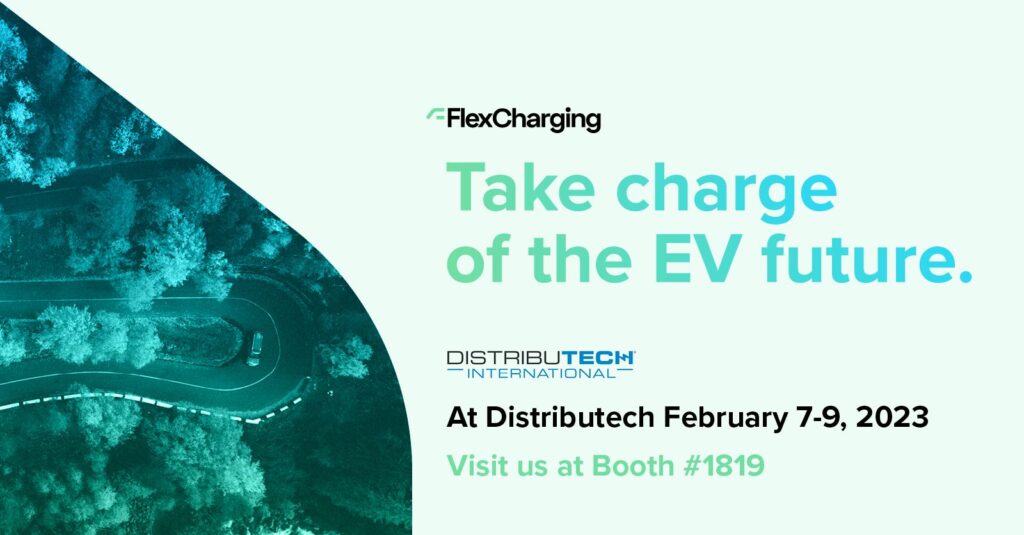Direct-To-Vehicle Telematics For Managed Charging
February 2023 | FlexCharging
Electric vehicle (EV) managed charging—also known as vehicle grid integration and EV demand response—is widely recognized within the electric utility industry as essential to accommodate large increases in EV charging loads while maintaining grid reliability, deploying more wind and solar power, and reducing greenhouse gases (GHGs) from power generation. Without managed charging, rapid growth in electric vehicle charging—especially at residences—will likely exacerbate peak demands and require increased capex for transmission and distribution, as well as large increases in load-following natural gas generation.

With managed charging, electric utilities and regulators can incentivize EV owners to charge when wind and solar resources are producing at or near maximum capacity, when overall system load is low, and/or when excess baseload generation is available. In New York State, effective managed charging of EVs could produce 14 GW of avoided peak load by 2050, according to an April 2022 white paper prepared by Cadmus Group and WRI for NYSERDA.
For EV owners, engaging with their utility’s managed charging program can provide significant utility bill credits; and those EV drivers on a time-varying tariff can save on fueling costs by timing their charging to low-cost hours. Managed charging also lays the groundwork for wider application of bidirectional vehicle-to-grid (V2G) charging, which is now limited to medium- and heavy-duty EVs, such as school buses.
Weighing submetering solutions
As electric utilities, regulators, electrification advocates, and other stakeholders work to chart cost-effective and equitable routes to managed charging, a key challenge is determining what submetering technology to support and the specifications to require for those technologies. Requiring homeowners to install a separate electricity meter to participate in EV charging was an early approach that has proven unpopular due to its costs.
The most common approaches that do not require separate electricity meters are 1) to utilize networked EV supply equipment (EVSE) such as a ChargePoint, Enel X, or Siemens smart charger that communicates wirelessly with an electric utility, and 2) telematics-based solutions that communicate wirelessly between vehicles and utilities by using EVs’ application program interfaces (APIs). This paper focuses on the telematics approach.
Another approach sometimes proposed for managed charging is AMI disaggregation. This technology uses AI algorithms to estimate EV charging activity based on consumption profiles. While it streamlines the user experience in similar ways to a telematics platform, it faces significant challenges—including accuracy concerns and regulatory prohibitions against utility ownership of behind-the-meter distributed energy resources (DERs). “AMI disaggregation is primarily useful for utilities to identify customers that have EVs and possibly to design passive behavioral programs,” said Brian Grunkemeyer, FlexCharging CEO. “As a control pathway, I don’t think it offers sufficient accuracy for EV managed charging.”
Using connected cars to streamline managed charging
Almost 30 years ago, telematics capabilities were first embedded in vehicles for security and navigation. Today, according to Smartcar, approximately 80% of cars sold in the U.S. include built-in cellular connectivity. This connectivity is used by OEMs to monitor vehicle performance and safety and by owners to access services for drivers and passengers. Third parties such as insurance companies, car-sharing entities, and fleet operators also use connected-vehicle telematics for purposes such as verifying driver mileage for insurance pricing and enabling contactless rentals with digital keys.
Telematics-based managed charging solutions such as FlexCharging communicate with an EV’s API to monitor charging activity and communicate that data to utilities. Utilities use the telematics platform to send customized information to EV drivers on grid conditions, GHG emissions factors, electricity pricing, and other factors that can influence their charging schedules. “Utilities primarily use FlexCharging to incentivize EV owners to shift charging to the best time of day, which varies with every day,” said Grunkemeyer.
Compared to EVSE-based managed charging, the telematics approach offers several important benefits: there is no cost to the EV owner, and the user experience is more streamlined. “To participate in managed charging enabled by telematics, an EV owner simply has to log into an app on their smartphone or web browser,” reports Jack Riordan, Strategic Initiatives Manager for Efficiency Maine Trust, which conducts managed charging pilots with utilities.
The EVSE-based approach requires vehicle owners to buy a level two smart charger—which costs between $650 and $1200 depending on amperage and features. “The EV owner also must hire a licensed electrician to install it, which can take time to schedule and may be too costly for some EV owners,” said Riordan. From a utility’s perspective, telematics-based managed charging doesn’t require any subsidy to incent an EV owner to purchase a smart charger.
Telematics pathways for managed charging
Vehicle telematics solutions communicate with vehicles in three ways:
1) Through agreements with automakers to communicate with their EVs’ APIs (EV owners must also agree to share their data);
2) By using third-party software tools and developer platforms, most commonly those of Smartcar; and
3) By reverse-engineering automakers’ APIs.
The first approach—in which a solutions provider signs a contract with an automaker to access vehicle APIs—may appear at first glance to be the most straightforward. But it has significant limitations. These include the time and difficulty required to develop a direct integration with an automotive OEM; poor functionality and performance of some OEMs’ APIs compared to those developed by Smartcar; and the risk that OEMs won’t extend contracts or will change terms and pricing in ways unfavorable to counterparties.
While it is true that some managed-charging providers, such as FlexCharging, do not have OEMs’ permission to communicate with vehicles, laws and judicial precedents in the United States, European Union, Canada, and elsewhere affirm that no such consent is needed from OEMs. Vehicle owners own their vehicle’s data and have the absolute right to grant access to that data as they wish.
This same data pathway—working directly with vehicle owners to engage their participation and access their vehicle data—is utilized by insurance companies for usage- and behavior-based premium pricing, by car-sharing companies, and other industries.
Tesla open to reverse engineering
Tesla, the largest seller of all-electric vehicles, has taken an open-source approach to vehicle data management. This has fostered a large and robust community of professionals and hobbyists who specialize in reverse engineering Tesla’s APIs. This community also produces documentation and even provides limited support.
Providers of telematics-based managed charging services leverage this reverse-engineering effort to monitor charging activity by Tesla owners. Some solutions providers, such as FlexCharging, have built large libraries with data from thousands of Tesla vehicles. FlexCharging’s data allows it to seamlessly work around common Tesla bugs and quirks. One example: aggressively refreshing Tesla OAuth tokens to ride out periodic server outages without requiring users to reauthenticate.
Moving toward revenue-grade metering
While more accurate than AMI disaggregation, by some measures, telematics-based methods of monitoring and reporting data on vehicle charging do not yet meet revenue-grade accuracy standards. As the California PUC found in its June 2022 decision on plug-in electric vehicle (PEV) submetering and communications protocols, “More work is needed on vehicle telematics before they can be used for PEV submetering.”
The CPUC ordered investor-owned utilities to host a workshop “for parties to explore issues associated with telematics” by summer 2023 and encouraged parties to “file a proposal for a PEV telematics submetering protocol” or amendments to include telematics in the 2022 protocols.
According to Zach Woogen, Senior Policy Manager for the Vehicle Grid Integration Council, utilities that pay or credit EV owners to participate in an EV managed charging program may not need revenue-grade metering to reward participation. However, using telematics to measure consumption for customer billing purposes—for example, a time-varying rate that aims to shift EV charging—will likely require a higher level of accuracy relative to programmatic approaches. “Until questions around accuracy can be resolved, FlexCharging, WeaveGrid, EV.Energy, Rolling Energy Resources, and other telematics-based solutions are unlikely to meet utilities’ requirements for participation in rate-based managed charging,” he said. “By contrast, the accuracy of billing customers based on smart EVSE can be verified because the protocol for testing the accuracy of these devices has been adopted in California, with other states likely to follow suit.”
According to CEO Grunkemeyer, FlexCharging has been validated in the field, using clients’ revenue-grade meters, as accurate within 1% at two pilot programs. “FlexCharging is currently using circuit-level current transformers to compare load with FlexCharging’s EV Telematics data and will participate in industry testing this year,” he said. “We expect to prove to customers and regulators that our charging data is within 1% accuracy in the lab, and 2% in the field.” While ANSI metering standards often considered to be “revenue-grade” require 0.5% accuracy in the laboratory, NIST laboratory and field accuracy standards are 1% and 2%, respectively, according to the CPUC’s adopted submetering protocol.
Metering accuracy is a critically important subject concerning all forms of distributed energy resources (DERs). “It’s something we’re grappling with in all realms of DERs,” said Riordan from Efficiency Maine. “We’re asking a wide range of electrical equipment to become dispatchable resources with revenue-grade measurements. That doesn’t exist yet for either the telematics or EVSE approaches to managed EV charging.”
Conclusion: Multiple options needed to scale managed charging
Sales of fully electric light-duty vehicles have grown dramatically in the United States over the last two years—despite the semiconductor shortages that cut deeply into EV production. (EVs often require more chips than internal-combustion engine vehicles.) After growing by 11.5% from 2019 to 2020, U.S. fully electric vehicle sales rose 71.9% in 2021 and 85.5% to about 807,000—almost 6% of light-duty vehicles sold vehicles in the country—in 2022. (Data from multiple government and private sources; excludes plug-in hybrid electric vehicles).
Analysts at BloombergNEF, Deloitte, and other research organizations expect the percentage of EV sales to rise as high as 50% by 2030 in the United States, especially with the Inflation Reduction Act (IRA) extending and expanding tax credits for EVs. New and forthcoming electric pickups by Ford, GMC, Chevy, Toyota, and Tesla will likely make electric-drive more popular in rural areas. And charging infrastructure funded by the IRA and the Bipartisan Infrastructure Law should ease the range anxiety that keeps many drivers on the fence about EVs.
“EVs are coming, and utilities must have tools to manage that load effectively lest they—and their ratepayers—be forced to invest enormous sums in new generation, transmission, and distribution infrastructure,” said VGIC’s Woogen. “At the same time, grids will be energized by a growing proportion of intermittent wind and solar that cannot be dispatched reliably to match load. Managed charging of EVs and—eventually—bidirectional V2G discharging to the grid are among the best ways we have to help solve these problems and decarbonize the electric grid.” “We’re going to need both telematics approaches as well as networked charger options to scale EVs as grid resources,” Woogen said. “Level 2 chargers may not appeal to many EV drivers due to their costs or other reasons. If we want to scale managed charging, we will need the largest menu of options possible for EV drivers to choose from, as well as smart and effective customer outreach and incentives programs to engage EV drivers.”
Written by: Jim Hight, Writer, research analyst, marketing consultant
